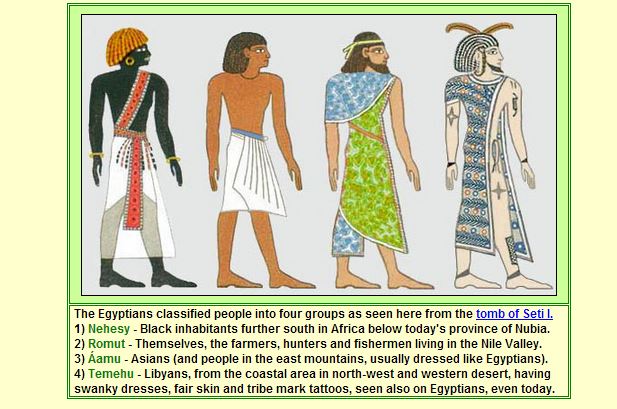It looks like you're using an Ad Blocker.
Please white-list or disable AboveTopSecret.com in your ad-blocking tool.
Thank you.
Some features of ATS will be disabled while you continue to use an ad-blocker.
18
share:
The following is a picture essay of how different civilization portray the outside other through art,anyone can contribute a small text at the bottom
of the pic giving a description would be kool any era is also ok.
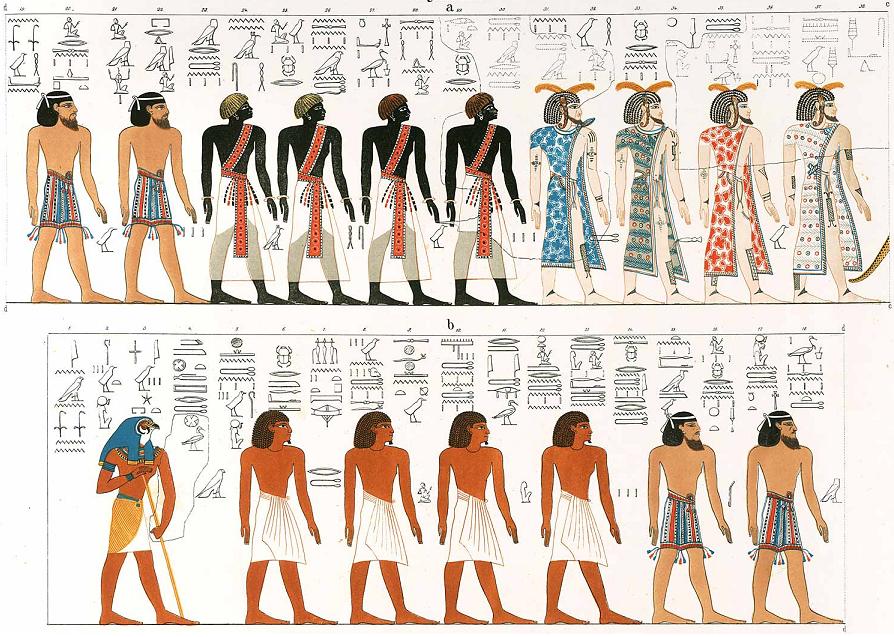
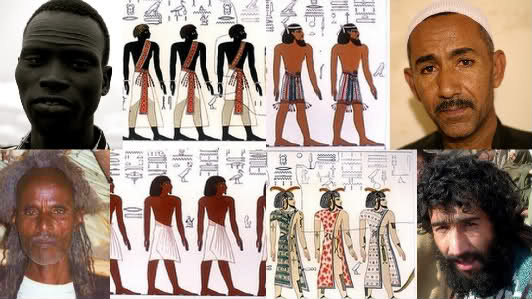
A Generic view of their possible near representatives
From the Book of gates it represents Known ethnys who fell under the protection of Ra
Horus says to the creatures of Ra who dwell in the Black Land (Kemet, Egypt) and in the Red Land (the deserts which lie on each side of the Black Land) "Magical protection be over you, O creatures of Ra, who have come into being from the Great One who is at the head of heaven. Let there be breath to your nostrils, and let your linen wrappings be loosened. You are the tears of the eye of my splendour in your name of Reth. Mighty of issue you have come into being in your name of Aamu; Sekhmet has created them, and it is she who delivers (avenges) their souls. I masturbated (to produce you), and I was content with the hundreds of thousands (of beings) who came forth from me in your name of Nehesu; Horus made them to come into being, and it is he who avengeth their souls. I sought out mine Eye, and you came into being in your name of Themenu; Sakhmet has created them, and she avenges their souls."
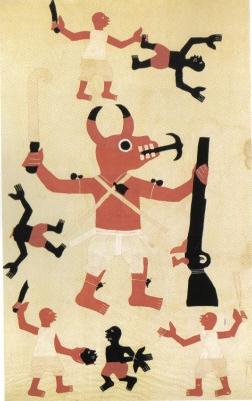
Dahomean war against Yoruba neighbors
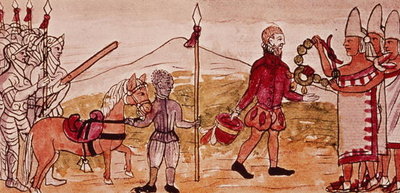
An Aztec view of foreigners intruding on their lands the Black is Juan Garrido who served under Hernán Cortés and Pizarro he was a mercenary/adventurer who traveled from West Africa by his own means to Portugal to find job as a plundering conquistador ,he was no slave.
In this he was not alone for during that era the kingdom of the Kongo had especially close ties to Portugal official exchanges of ambassadors,high born of both lands visited each other for trade and religious matters,but part of the trade was in human beings captured in wars with other states with whom the Kongos trying to annex,the below are multiple levels of Africans living in Lisbon from slaves most likely Angolans to Knights,most likely Kongolese high borns looking for adventure in Europe.
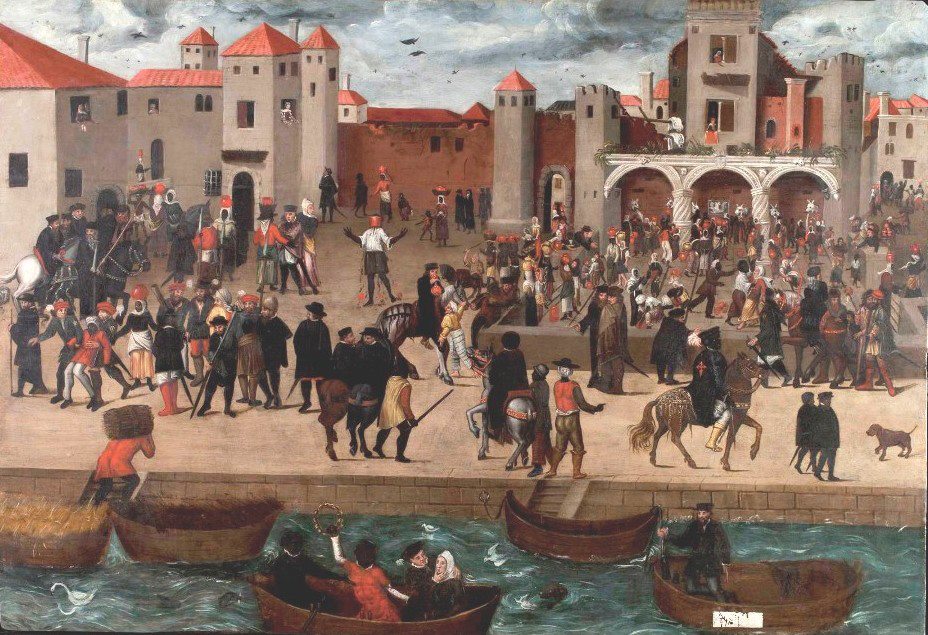

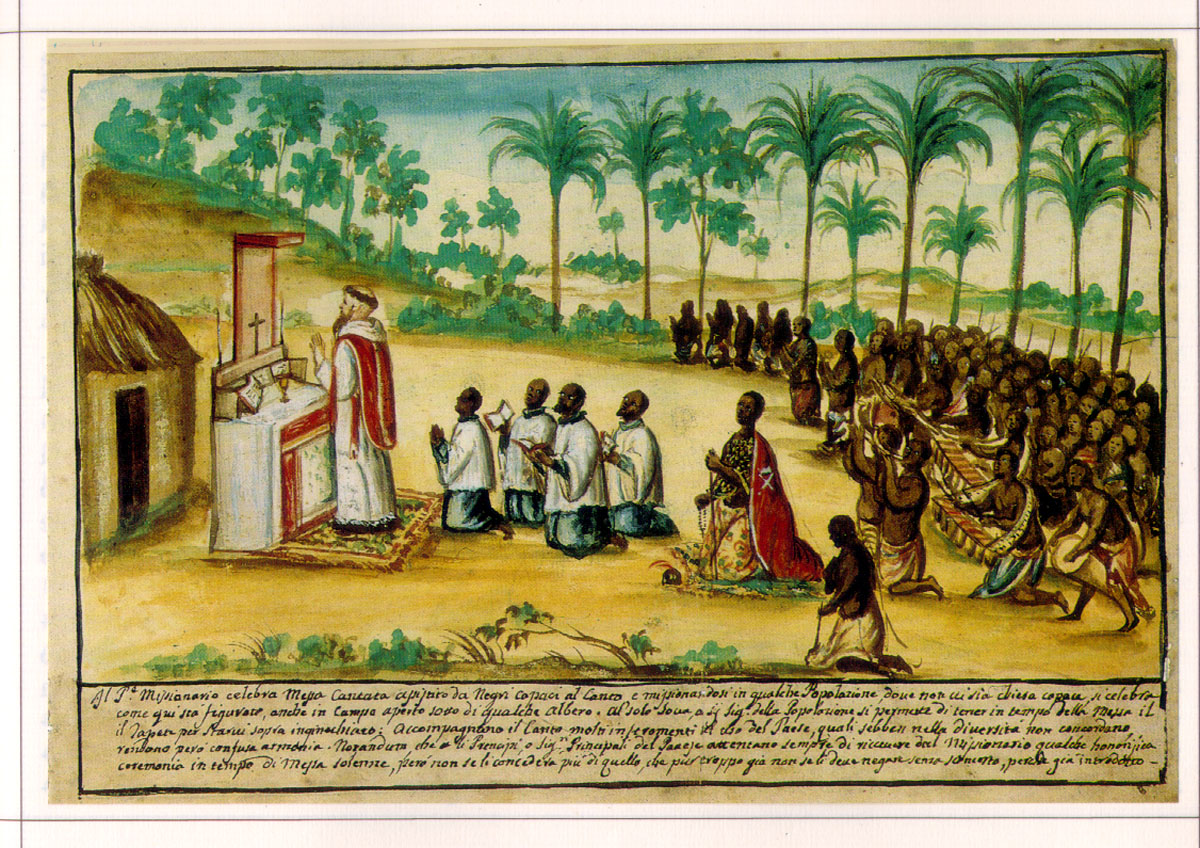
Portuguese priest giving mass to Kongolese high borns, it is these types that would find themselves in Europe hanging-out with the European high borns of their day

Emanuele Ne Vunda (died 1608), also Antonio Emanuele Ne Vunda, or Antonio Emmanuele Funta, the ambassador from Congo, sent by the king of Congo Alvaro II to Pope Paul V in 1604–1608Ne-Vunda traveled through Brazil and Spain and only reached Rome on 3 January 1608, but he died two days later of illness.
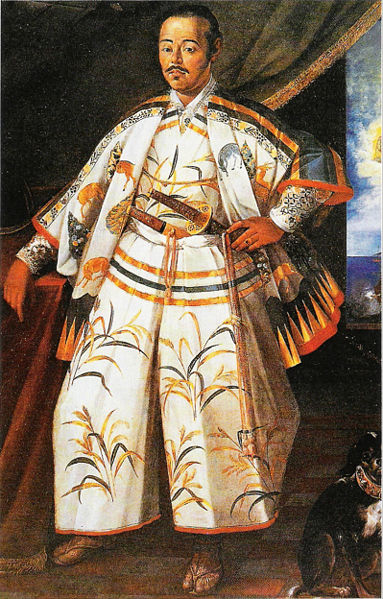
Hasekura Rokuemon Tsunenaga (or "Francisco Felipe Faxicura", as he was baptized in Spain) (1571–1622
In the years 1613 through 1620, Hasekura headed a diplomatic mission to the Vatican in Rome, traveling through New Spain (arriving in Acapulco and departing from Veracruz) and visiting various ports-of-call in Europe. This historic mission is called the Keichō Embassy
It is interesting given the wider world context and the eventual different out come of such visitations and contact for while the Japanese subsequently beheaded their Christians converts driving them under ground and throwing out all foreigners for the next 200yrs ,the Kongolese allowed the Portuguese continued access and meddling to take root,resulting in the brake-up of their kingdom in war with a very powerful freedom loving Queen named Nizinga


A Generic view of their possible near representatives
From the Book of gates it represents Known ethnys who fell under the protection of Ra
Horus says to the creatures of Ra who dwell in the Black Land (Kemet, Egypt) and in the Red Land (the deserts which lie on each side of the Black Land) "Magical protection be over you, O creatures of Ra, who have come into being from the Great One who is at the head of heaven. Let there be breath to your nostrils, and let your linen wrappings be loosened. You are the tears of the eye of my splendour in your name of Reth. Mighty of issue you have come into being in your name of Aamu; Sekhmet has created them, and it is she who delivers (avenges) their souls. I masturbated (to produce you), and I was content with the hundreds of thousands (of beings) who came forth from me in your name of Nehesu; Horus made them to come into being, and it is he who avengeth their souls. I sought out mine Eye, and you came into being in your name of Themenu; Sakhmet has created them, and she avenges their souls."

Dahomean war against Yoruba neighbors

An Aztec view of foreigners intruding on their lands the Black is Juan Garrido who served under Hernán Cortés and Pizarro he was a mercenary/adventurer who traveled from West Africa by his own means to Portugal to find job as a plundering conquistador ,he was no slave.
In this he was not alone for during that era the kingdom of the Kongo had especially close ties to Portugal official exchanges of ambassadors,high born of both lands visited each other for trade and religious matters,but part of the trade was in human beings captured in wars with other states with whom the Kongos trying to annex,the below are multiple levels of Africans living in Lisbon from slaves most likely Angolans to Knights,most likely Kongolese high borns looking for adventure in Europe.



Portuguese priest giving mass to Kongolese high borns, it is these types that would find themselves in Europe hanging-out with the European high borns of their day

Emanuele Ne Vunda (died 1608), also Antonio Emanuele Ne Vunda, or Antonio Emmanuele Funta, the ambassador from Congo, sent by the king of Congo Alvaro II to Pope Paul V in 1604–1608Ne-Vunda traveled through Brazil and Spain and only reached Rome on 3 January 1608, but he died two days later of illness.

Hasekura Rokuemon Tsunenaga (or "Francisco Felipe Faxicura", as he was baptized in Spain) (1571–1622
In the years 1613 through 1620, Hasekura headed a diplomatic mission to the Vatican in Rome, traveling through New Spain (arriving in Acapulco and departing from Veracruz) and visiting various ports-of-call in Europe. This historic mission is called the Keichō Embassy
It is interesting given the wider world context and the eventual different out come of such visitations and contact for while the Japanese subsequently beheaded their Christians converts driving them under ground and throwing out all foreigners for the next 200yrs ,the Kongolese allowed the Portuguese continued access and meddling to take root,resulting in the brake-up of their kingdom in war with a very powerful freedom loving Queen named Nizinga
edit on 26-8-2014 by Spider879 because: typos
Cool pics. Out of interest, would the people in the bottom right hand or top right of the first picture be Hebrews or Israelites?
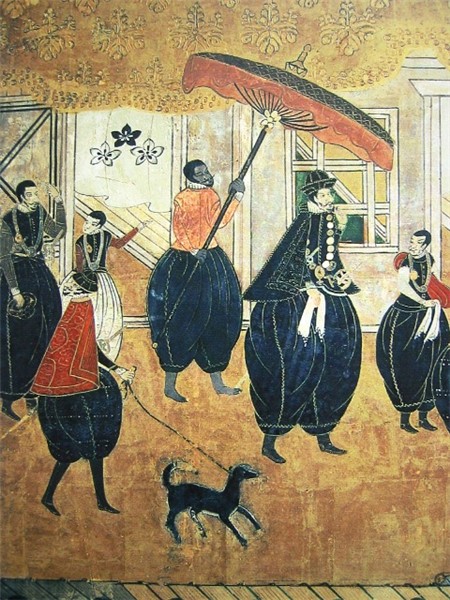
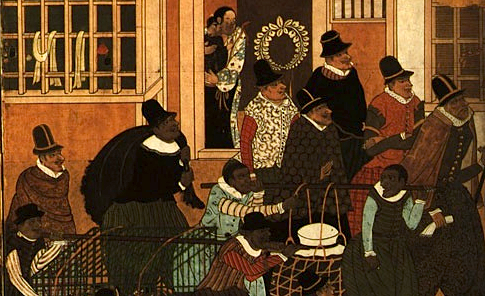
Nanban trade period or Southern barbarian trade involved were the Dutch and Portuguese this era was roughly from 1543 to 1614 in this you will noticed that there are Black men shown in inferior positions these are the result of warfare between the Kingdom of the Kongo and Angola,the Portuguese got their Pows transformed into slaves from the Angolans while the Dutch got theirs from among the Kongolese captured by the Angolans,as mentioned above the Angolan queen Niznga stopped Kongolese encroachment on her lands,then to the fight to the Portuguese directly keeping them at bay, she had allied herself to the Dutch who supplied her with arms,after dealing with the Portuguese she turned on her ally the Dutch disposing of them
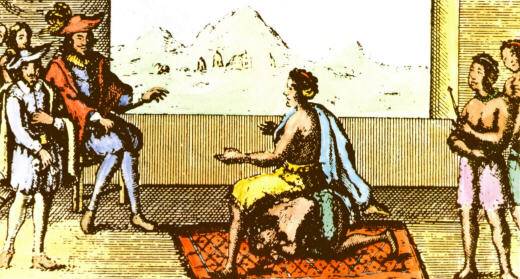
An interesting note while at negotiating with the Portuguese for cease fire, the Portuguese commander refused to give her a seat she would have to stand before him or sit on the floor giving him a physiological advantage, she promptly snapped her fingers and a member of her entourage placed him self for her as a make shift chair needless to the her opponents were singularly impressed.
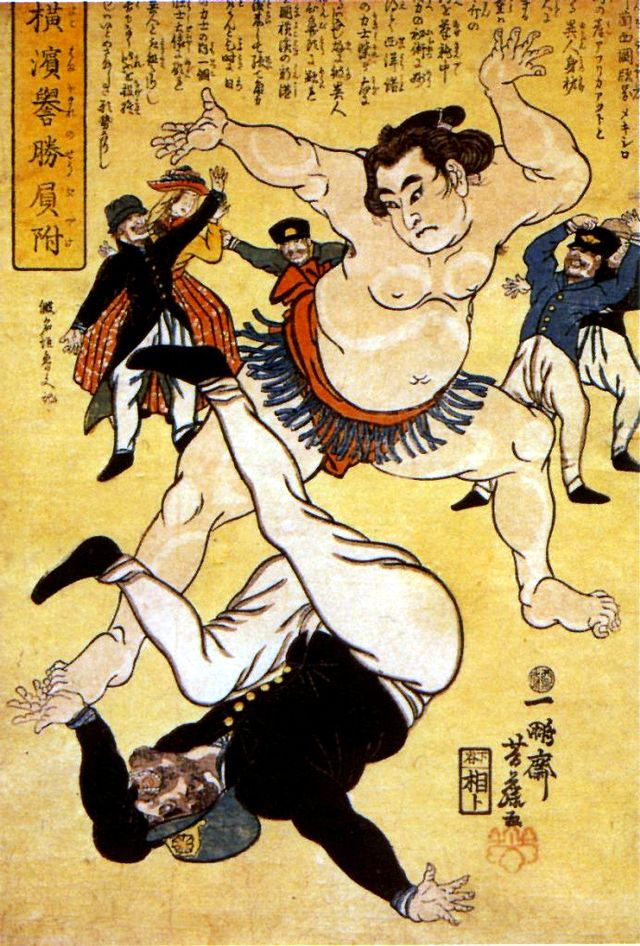
A sailor getting tossed around by a Sumo Foreigner and Wrestler at Yokohama 1861
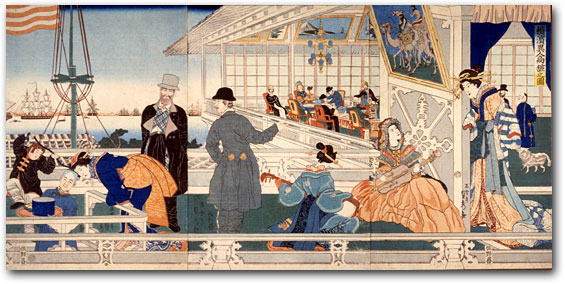
American and Japanese mercantile class at a Foreign Residence in Yokohama” by Yoshikazu, 1861 the was the beginning of America's gun boat diplomacy and the opening of trade with Japan that had shut themselves off from the outside world .
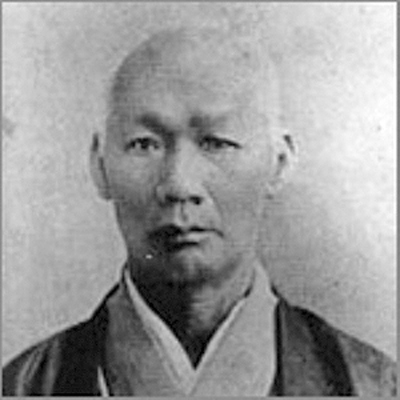
In 1841 at the age of 14, John Manjiro, whose fishing vessel was wrecked in Ashizuri-oki, landed on Torishima Island, where he was rescued by a U.S. whaler and brought to America. He became the first Japanese to set foot on American soil.
Manjiro, taking the name "John Manjiro," was welcomed by the citizens of Fairhaven and New Bedford where he disembarked. With the warm interest of Captain Whitfield, he became the first Japanese student to receive an American elementary and intermediate education as well as a high school education in English, Mathematics, Navigation and Shipbuilding, History, and Geography. He also acted as First Mate on a whaling ship's 40-month journey around the world.
At 24, his thoughts turning to the importance of opening Japan and to his mother, he resolved to return to closed Japan, even at the pain of death. He departed Hawaii and landed in the Ryukyu Islands in 1851. Undergoing investigation there, he then went further in the Ryukyus and on to Nagasaki and Tosa, where he was repeatedly interrogated for the crime of contravening the nation's policy of isolation. He was finally permitted to return to his home in Nakanohama in October of 1852, and mother and son enjoyed a moving reunion after their 12-year separation.
The Tosa government initially forbade him to leave his home town, "for travel abroad, needless to say, and for ocean-bound fishing journeys." It appeared that the order must dispel Manjiro's dream of appealing directly to the Shogun and becoming a force for the opening of Japan, but the urgency of the times demanded the technical and general knowledge that Manjiro had brought from America. Manjiro had just three days and nights with his mother before he was called back by Yamanouchi Yodo, Lord of the Tosa Domain. He became a teacher at the Tosa School, lecturing on American democracy, on freedom and equality, on the independent spirit, and on his travels on the world's seas, and it is said that he greatly influenced Sakamoto Ryoma and Goto Shojiro.
In 1853 America's Admiral Perry came demanding the opening of Japan. The bakufu speedily ordered Manjiro's appearance and he became a Shogunal retainer, dedicating himself to some of the nation's most pressing problems. "America greatly hopes to enjoy a deep and abiding friendship with Japan," he told the Shogunate. "America does not come with suspicious designs but with a full and open heart." With this encouragement, the Shogunate discarded the laws of over 200 years' standing and took the first step toward opening the country. It is impossible to measure the service rendered by Manjiro in enabling Japan to accept the Japan-United States Friendship Treaty.
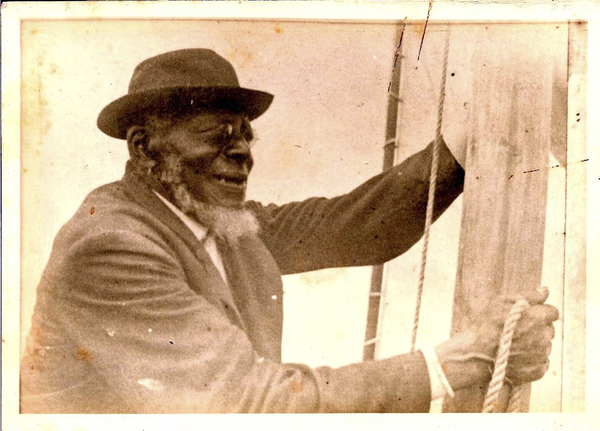
Pyrrhus Concer,150yrs after the close of the Nanban era.
That an able-bodied young man would be eager to join that fearless fraternity of whalemen is perhaps not surprising. That black men were, in fact, well represented among them, is perhaps more so. In their research, curators of joint exhibitions held at the Cold Spring Harbor Whaling Museum and the Black History Museum of Hempstead in 1982 found documentation for estimates that before the Civil War there were as many as 3,000 Africans, West Indians and American blacks manning the American whaling fleet, and that post-Civil War there were even more. The standard-issue harpoon, they discovered, was invented by a black man, Lewis Temple, and perhaps most impressive of all, some 40 vessels built during whaling’s golden era were designed and built by another black man, John Mashow.
If among all the others Concer became something of a celebrity, at least locally, it is because he was on board and played a role when the whale ship Manhattan, captained by Mercator Cooper of Southampton, made history in 1848. At the time, foreigners were forbidden to enter Japan but Captain Cooper, after rescuing the crews of two shipwrecked Japanese vessels, was determined to return them to their country.
In his later years, Concer delighted listeners with his narrative of that incident, describing how the initial hostility of the Japanese softened until in the end the crew and officers of the Manhattan were feted and given gifts before being sent on their way. The Japanese, who had never before seen a black man, marveled at our man Concer. As Arthur P. Davis relates in his booklet, “A Black Diamond in the Queen’s Tiara,” one after another, they would try “to rub off the black of his skin, stare at his marvelous perfect white teeth and listen to him speak.” The voyage not only offered a first glimpse of a reclusive land but earned good will for America, easing the way for Commodore Perry’s breakthrough eight years later.
Concer made a number of other voyages and went to California in 1849 during the gold rush, returning a year later without having struck it rich. In his old age he was a respected landowner, churchgoer (he included the Presbyterian Church in his will) and familiar figure around the village where he operated a ferry service on Lake Agawam in summer. Passengers could shuttle between the village and the beach on his catboat for 10 cents a ride.
edit on 26-8-2014 by Spider879 because: typos
originally posted by: grumpy64
Cool pics. Out of interest, would the people in the bottom right hand or top right of the first picture be Hebrews or Israelites?
They were Laventines at that time Hebrews were not a distinct nation although they would certainly be included under the general term Aamu.
Oh Before I move on one Black of the Namban era made it to the rank of Samurai his story is quite interesting he seemed to be an Angolan taken to
Japan by the Portuguese his status is not entirely clear to me but the possibility that he was a slave remains high,he was given the name Yasuke
though no portrait of him exist
YASUKE: THE AFRICAN SAMURAI
thedailybeagle.net...
Side note it was rumored he and Nobunaga had a Bromance thing going,Nobunaga was said to be kinda gay.
He would in fact predate the first White Samurai an English man named William Adams by about a century
en.wikipedia.org...(sailor)
Sorry no pics of either fail! but their stories are fascinating .
YASUKE: THE AFRICAN SAMURAI
Nobunaga first heard of Yasuke when the news reached him in 1581 of the great crush that had occurred when Valignano had brought him to Kyoto where his skin colour and height attracted a huge crowd. Nobunaga ordered the Jesuit to bring Yasuke to his court so that he could see this sensation in the flesh. Upon seeing Yasuke Nobunaga allegedly ordered his stripped to the waist and scrubbed believing that his skin was painted. Japanese sources described Yasuke as “looking between the age of 24 or 25, black like an ox, healthy and good looking, and possessing the strength of 10 men.
Nobunaga was further intrigued by the fact that Yasuke could speak Japanese (albeit not perfectly) and ordered Valignano to leave Yasuke in his care when the Jesuit prepared to leave again. Yasuke became a permanent fixture in Nobunaga’s retinue, his size and strength acting as a deterrent to assassination not to mention a flavour of exoticism to accompany the warlord’s other Western possessions. Apparently Nobunaga became so fond of Yasuke that rumours abounded that the slave was going to be made a Daimyo (a Japanese land-owning lord). These rumours were proven wrong, however, Yasuke was given the honour of being made a member of the samurai class, a rare honour among foreigners.
thedailybeagle.net...
Side note it was rumored he and Nobunaga had a Bromance thing going,Nobunaga was said to be kinda gay.
He would in fact predate the first White Samurai an English man named William Adams by about a century
William Adams (24 September 1564 – 16 May 1620), known in Japanese as Anjin Miura (三浦按針: "the pilot of Miura"), was an English navigator who travelled to Japan and is believed to be the first Englishman ever to reach that country. He was the inspiration for the character of John Blackthorne in James Clavell's best-selling novel Shōgun.
Soon after Adams' arrival in Japan, he became a key advisor to the shogun Tokugawa Ieyasu and built Japan's first Western-style ships for him. Adams was later the key player in the establishment of trading factories by the Netherlands and England. He was also highly involved in Japan's Red Seal Asian trade, chartering and captaining several ships to Southeast Asia. He died in Japan at age 55, and has been recognised as one of the most influential foreigners in Japan during this period
en.wikipedia.org...(sailor)
Sorry no pics of either fail! but their stories are fascinating .
edit on 26-8-2014 by Spider879 because: (no reason given)
originally posted by: theabsolutetruth
a reply to: grumpy64
Those are Libyans. This thread has more images from the site.
www.nemo.nu...
Thanks for the correction I was looking at the top of the register.
4th picture from below = Street Fighter II
edit on 26-8-2014 by thevace because: (no reason given)
edit on 26-8-2014 by
thevace because: (no reason given)
Appologies folks forgot to put the links for John Manjiro , Pyrrhus Concer and the Book Of Gates
John Manjiro
www.manjiro.org...
Pyrrgus Concer
patch.com...
BBook Of Gate text
www.ancientegyptonline.co.uk...
John Manjiro
www.manjiro.org...
Pyrrgus Concer
patch.com...
BBook Of Gate text
www.ancientegyptonline.co.uk...
edit on 26-8-2014 by Spider879 because: (no reason given)
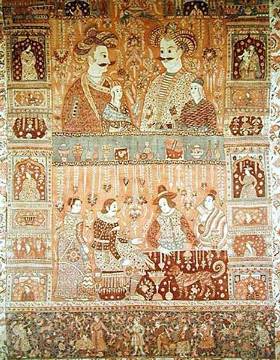
Bedspread depicting native potentates and European traders in Golconda, 17th century by Unbekann
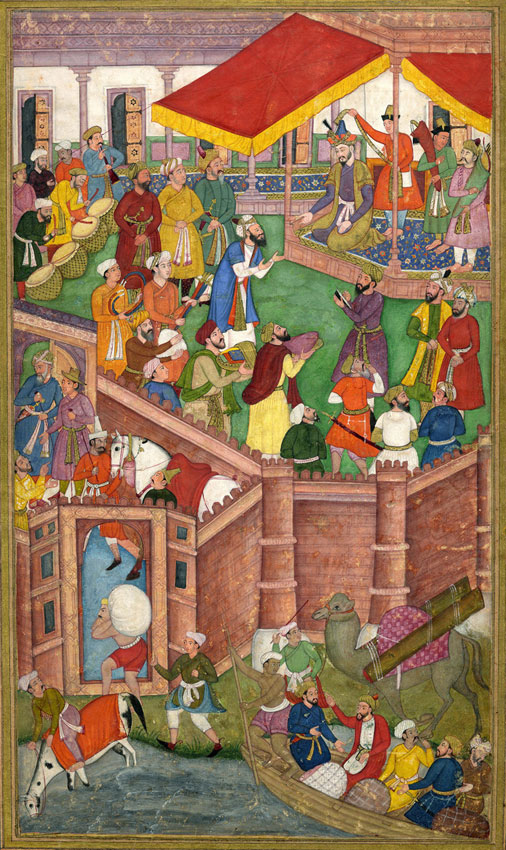
HE ARRIVAL OF HUMAYUN IN THE CITY OF LAHORE
India (Mughal), 1595-1600
By Makra with portraits by Mukund
www.asianart.com...
In the piece various ethnys trading in India is depicted
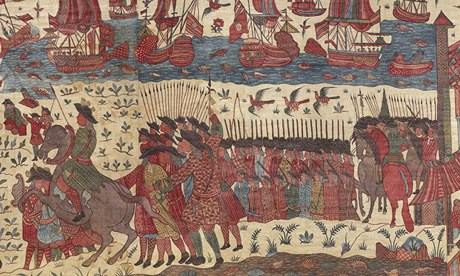
Detail from a Hanging Depicting a European Conflict in South India (1740s-50s). Photograph: The Metropolitan Museum of Art, New York
www.theguardian.com...
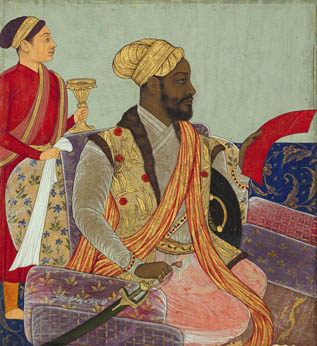
Sidi Masud Khan an African general turned ruler of Bijapour
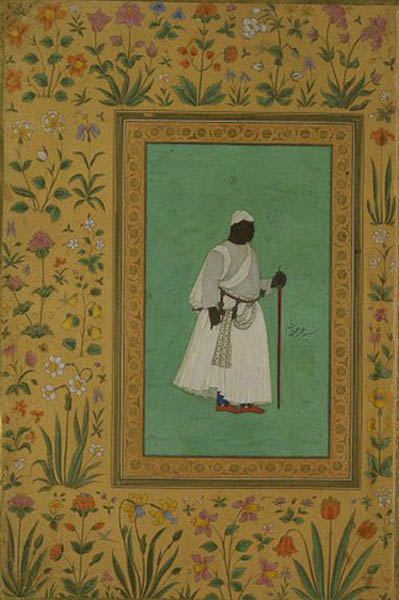
Malik Ambar his story reads like some thing from Conan the Barbarian Slave,Soldier,General, Minister,King Of The Deccan India
originally posted by: bigfatfurrytexan
This image:
From when does it date?
I believe this was King Gle'le's Banner late 19th to early 20th century but those type of Battle banners goes back goes back before the time of king Agadja in the 1700rds ,what is remarkable is their battle scenes is reminiscent of Nile valley Battle scenes where the King take on the animal form of a bull or lion crushing his enemy
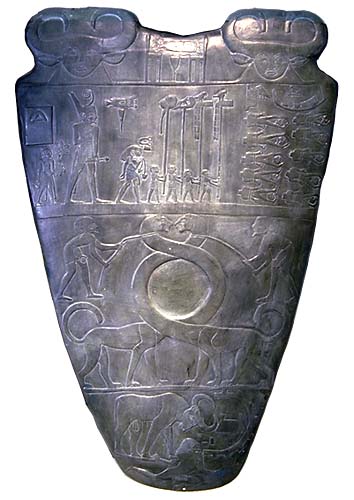
Check out the Bull on the bottom of Narmer's palette,there are other striking resemblances in religious and political icons but too much to get into for this thread.
In the making of the Americas there is every conceivable combination of genes and phenotype I won't go into the more controversial topic of
pre-Colombian contacts but the post Colombian view is just as fascinating
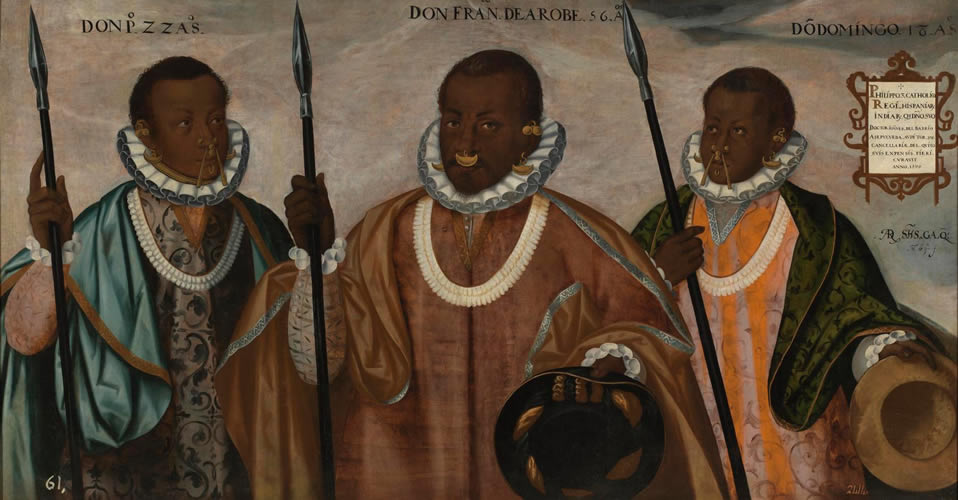
Africans of Esmeraldas, Ecuador: A Look at the 1599 Painting of Don Francisco de Arobe and His Two Sons
Painting: Mulatos de Esmeraldas: Quito Equador Don Francisco de Arobe and his two sons, circa 1599.
In 1599, the painting was created by a Native American painter by the name of Adrián Sánchez Galque. Like many original, fine works of art of this time, the painting is last known to exist in the collection of a European museum in Spain, the Museo de América de Madrid. When we first came upon this image from 1599, we became curious about the story behind the painting and the subsequent history of those Africans who continue at that placed called Esmeralda, Ecuador more than 400 years after the painting was commissioned.
www.blackhistoryheroes.com...
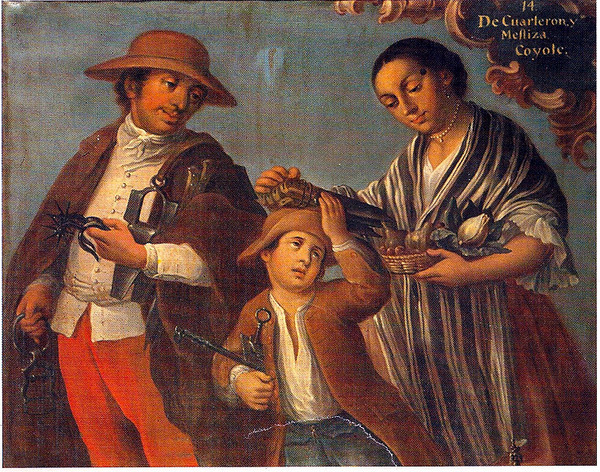
Series 10.14 De Cuarteron y Mestiza produce Coyote
(From Quadroon man and Mestiza woman, Coyote boy)
Series 10.14 De Cuarteron y Mestiza produce Coyote
(From Quadroon man and Mestiza woman, Coyote boy)
Dublin Core
Title
Series 10.14 De Cuarteron y Mestiza produce Coyote
(From Quadroon man and Mestiza woman, Coyote boy)
Subject
Paintings of race mixture in colonial Mexico.
race-in-colonial-mexico.net...
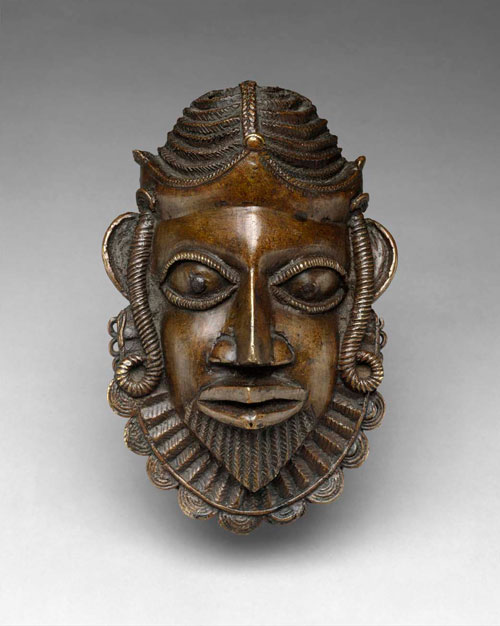
Edo culture, Benin Kingdom, Nigeria. Hip Pendant Depicting Portuguese Face, 1500s-1800s. Brass. The Metropolitan Museum of Art,
arttattler.com...
Next to the Angolans the Benin had close commercial relations with the Portuguese however unlike the Kongolese they were kept away at a relative distance and told to stay put on the coast or ask permission to obtain a visa to travel in land. the pice above is a European despite the artist giving him local features.
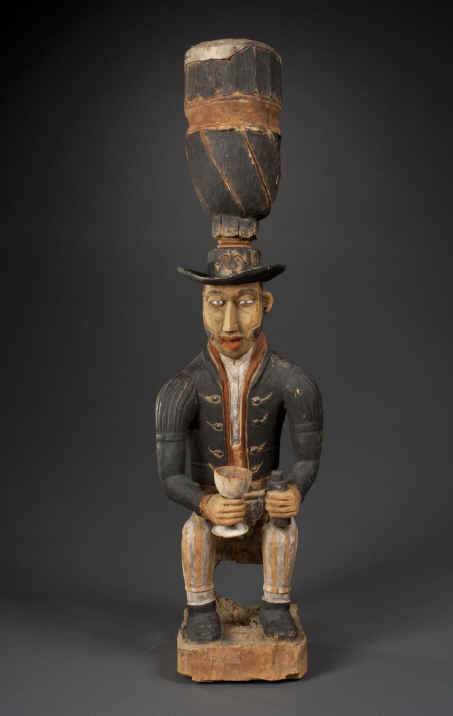
DIA Caryatid Drum Depicting a European
I have no date for this piece.

Africans of Esmeraldas, Ecuador: A Look at the 1599 Painting of Don Francisco de Arobe and His Two Sons
Painting: Mulatos de Esmeraldas: Quito Equador Don Francisco de Arobe and his two sons, circa 1599.
In 1599, the painting was created by a Native American painter by the name of Adrián Sánchez Galque. Like many original, fine works of art of this time, the painting is last known to exist in the collection of a European museum in Spain, the Museo de América de Madrid. When we first came upon this image from 1599, we became curious about the story behind the painting and the subsequent history of those Africans who continue at that placed called Esmeralda, Ecuador more than 400 years after the painting was commissioned.
www.blackhistoryheroes.com...

Series 10.14 De Cuarteron y Mestiza produce Coyote
(From Quadroon man and Mestiza woman, Coyote boy)
Series 10.14 De Cuarteron y Mestiza produce Coyote
(From Quadroon man and Mestiza woman, Coyote boy)
Dublin Core
Title
Series 10.14 De Cuarteron y Mestiza produce Coyote
(From Quadroon man and Mestiza woman, Coyote boy)
Subject
Paintings of race mixture in colonial Mexico.
race-in-colonial-mexico.net...

Edo culture, Benin Kingdom, Nigeria. Hip Pendant Depicting Portuguese Face, 1500s-1800s. Brass. The Metropolitan Museum of Art,
arttattler.com...
Next to the Angolans the Benin had close commercial relations with the Portuguese however unlike the Kongolese they were kept away at a relative distance and told to stay put on the coast or ask permission to obtain a visa to travel in land. the pice above is a European despite the artist giving him local features.

DIA Caryatid Drum Depicting a European
I have no date for this piece.
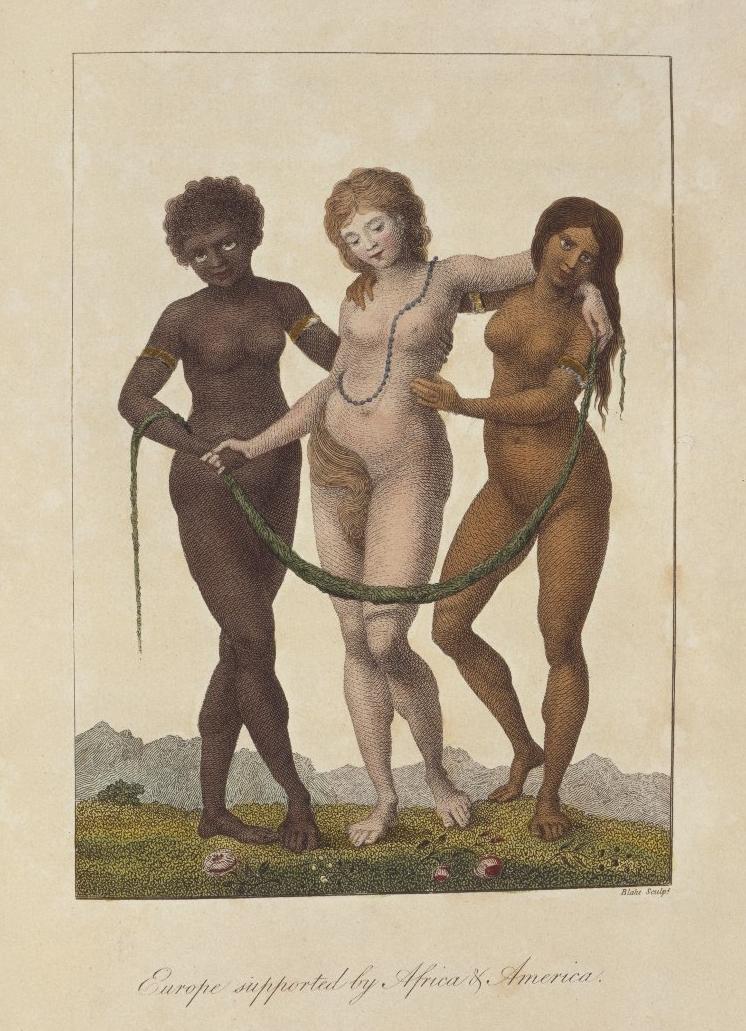
Europe Supported by Africa and America'
Surinam Slave Trade
"Going now to take my leave of Surinam, after all the horrors and cruelties with which I must have hurt both the eye and the heart of the reader, I will close with an emblematical picture of Europe supported by Africa and America, accompanied by an ardent wish that the friendly manner as they are represented, they may henceforth and to all eternity be the props of each other... We only differ in colour, but are certainly all created by the same hand."
[Capt. John Gabriel Stedman]
ofallarts.blogspot.jp...
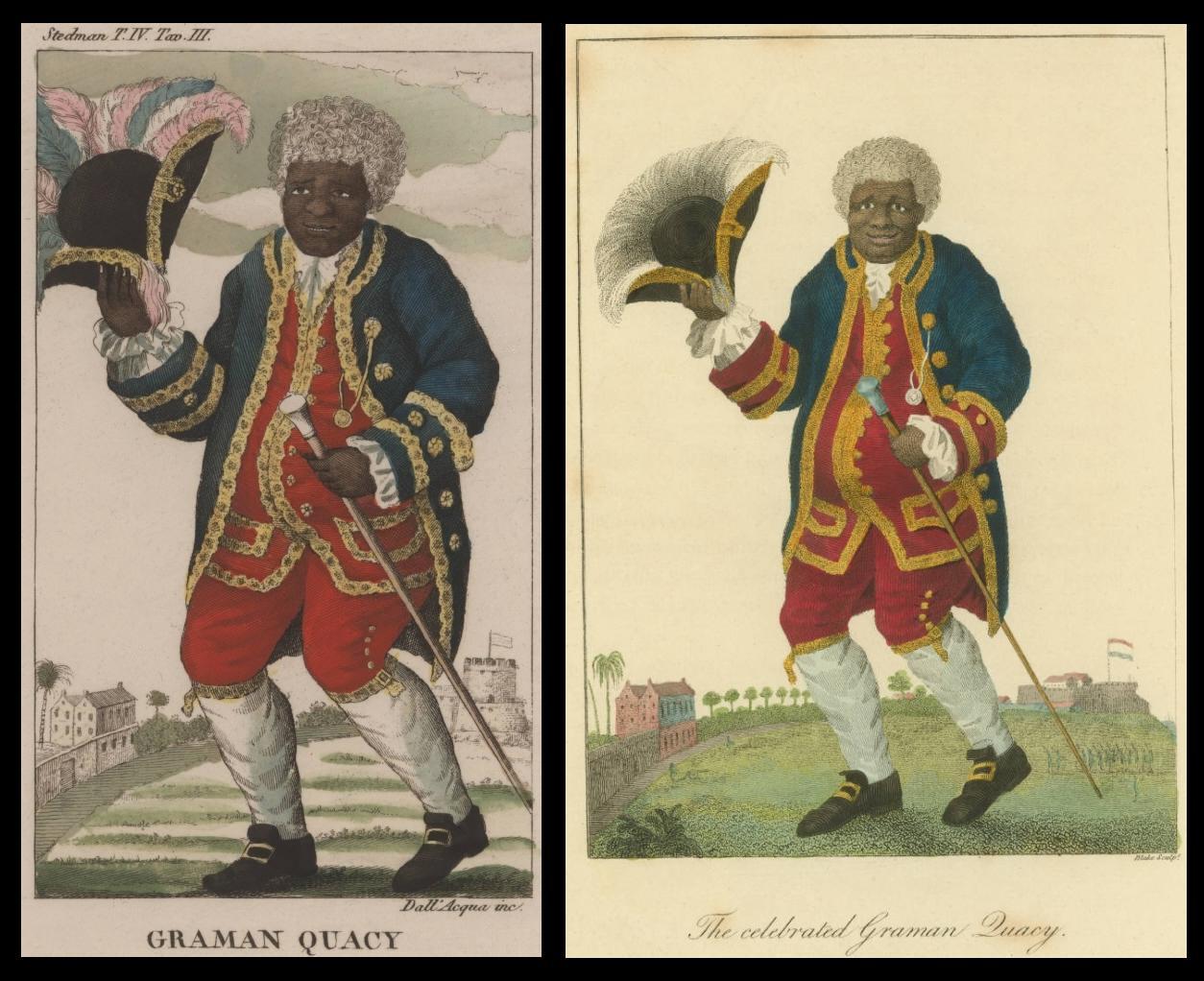
A black man in eleborate European dress with a feathered cocked hat, watch, and a walking stick stands before a dwelling, fortifications with a Dutch flag, and soldiers drilling. Quacy, or Kwasi, was born in West Africa ca. 1690 and transported to Suriname as a child. By 1730, he had discovered the medicinal properties of the Quassiehout, Quassia amara, and served during the next six decades as the colony's leading medicine man with vast influence over all the inhabitants, black, white, and native, of Suriname. He was also the colony's principal intermediary in dealing with maroons*, serving first as a scout, then a negotiator, and then as an advisor to the Rangers. Kwasi was manumitted*, became a planter, and remained active well into his nineties.
ofallarts.blogspot.jp...
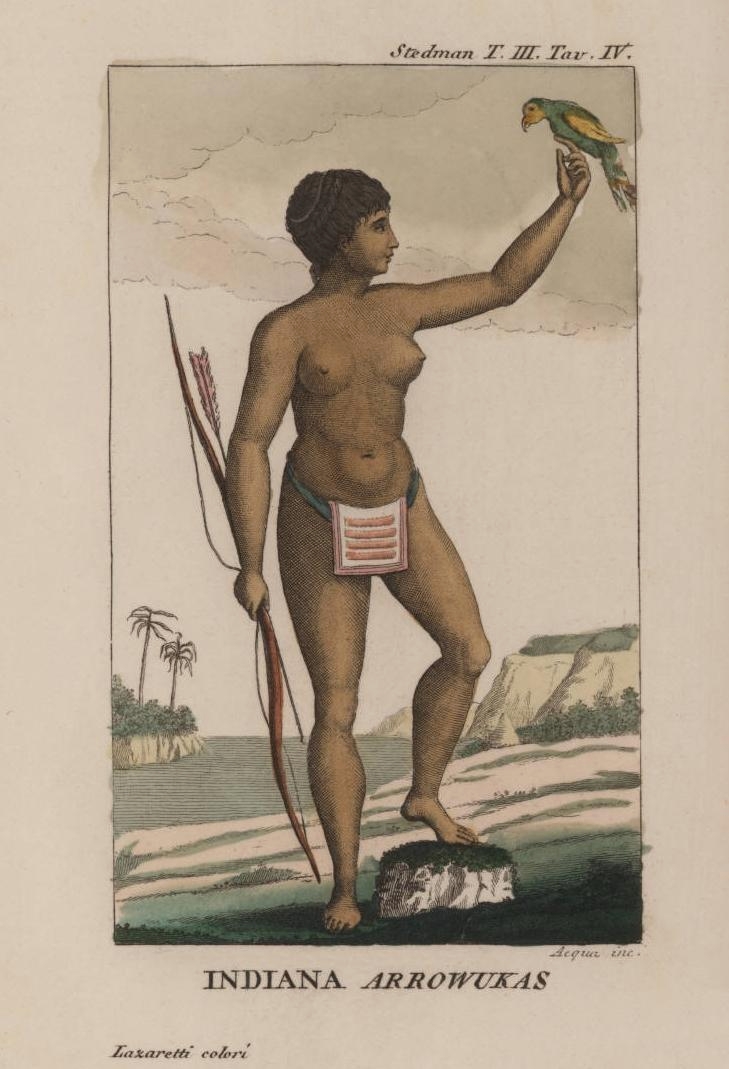
'Indiana Arrowukas'
['The term Arawak (from aru, the Lokono word for cassava flour), was used
to designate the Amerindians encountered by the Spanish in the Caribbean.')
ofallarts.blogspot.jp...
The Blemmyae or Akephaloi
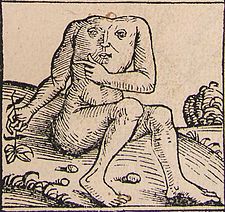
Pliny the Elder wrote in his Natural History of the Blemmyae tribe of North Africa; "...said to have no heads, their mouths and eyes being seated in their breasts."
Herodotus wrote in Histories that the ancient Libyans claimed among the peoples of their land not only the Blemmyae but also the Cynocephaly.
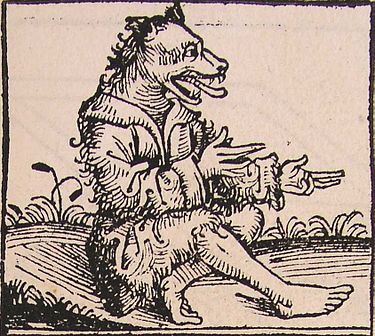
Pliny the Elder also wrote of the Monopods whose identification he attributes to Ctesias;
"He speaks also of another race of men, who are known as Monocoli, who have only one leg, but are able to leap with surprising agility. The same people are also called Sciapodae, because they are in the habit of lying on their backs, during the time of the extreme heat, and protect themselves from the sun by the shade of their feet."
They were said t exist in both India and Ethiopia.
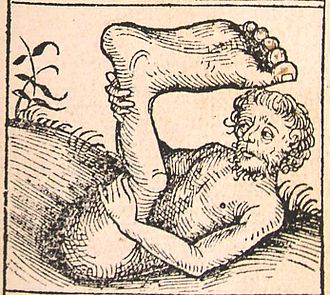
These peoples were at one time all considered genuine tribes. In fact St. Augustine entitled a chapter (b16c8) in City of God "Whether Certain Monstrous Races of Men Are Derived From the Stock of Adam or Noah's Sons"
pictures from the Nuremberg Chronicle (1493)

Pliny the Elder wrote in his Natural History of the Blemmyae tribe of North Africa; "...said to have no heads, their mouths and eyes being seated in their breasts."
Herodotus wrote in Histories that the ancient Libyans claimed among the peoples of their land not only the Blemmyae but also the Cynocephaly.

Pliny the Elder also wrote of the Monopods whose identification he attributes to Ctesias;
"He speaks also of another race of men, who are known as Monocoli, who have only one leg, but are able to leap with surprising agility. The same people are also called Sciapodae, because they are in the habit of lying on their backs, during the time of the extreme heat, and protect themselves from the sun by the shade of their feet."
They were said t exist in both India and Ethiopia.

These peoples were at one time all considered genuine tribes. In fact St. Augustine entitled a chapter (b16c8) in City of God "Whether Certain Monstrous Races of Men Are Derived From the Stock of Adam or Noah's Sons"
pictures from the Nuremberg Chronicle (1493)
Well certainly some ancients might have mistook persons afflicted with some strange condition as otherness some folks in Africa have an Ostrich like
feet so,while I don't think headless men exist there are folks out there with very unusual features,such as excessive hairiness and tails.
Speaking of which the Gorilla was thought to be a mythical wild man,not unlike the yeti or big foot until it's discovery by Europeans in the early 20th cent
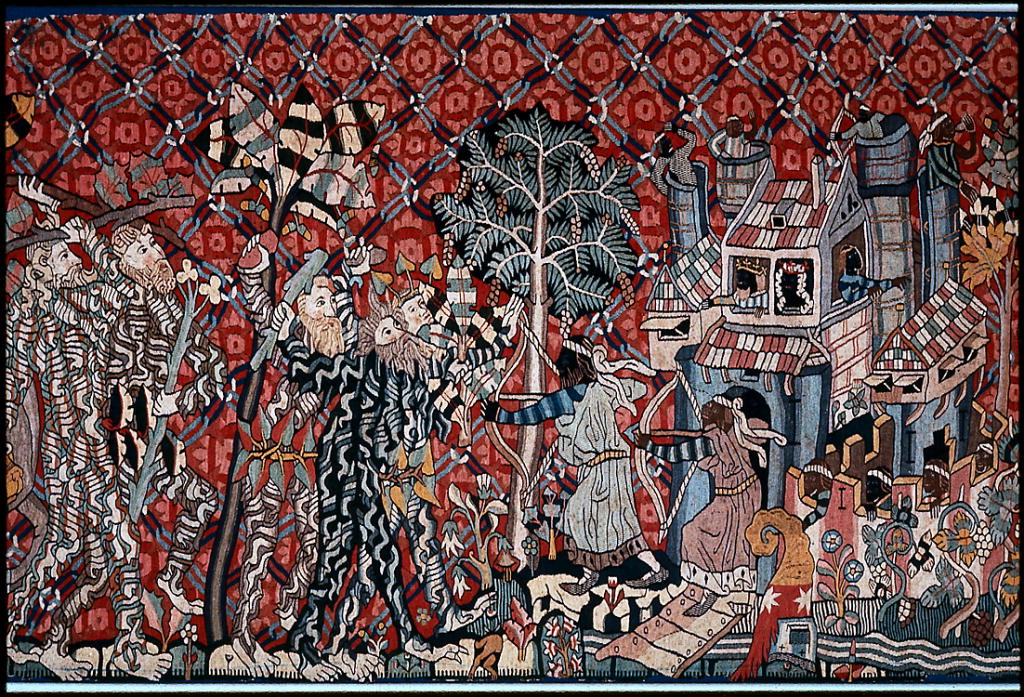
Wild Men and Moors
Linen and Wool Slit Tapestry
Germany (c. 1431)
In this Medieval German tapestry, the Wild Men of the forest attack the castle stronghold of Moors, whose king and queen look on as the soldiers defend it. It is an interesting reversal of “light=good, dark=bad” symbolism that many are familiar with from a great deal of Fantasy fiction, although this kind of coded language rarely was considered relevant to skin color until the 18th and 19th centuries.
medievalpoc.tumblr.com...
Actually the condition is caused by genetic defect called ectrodactyly, in which the middle three toes are missing and only the two outer toes develop. The mutation that causes it is dominant and is found on chromosome 7. Conditions such as this normally do not persist in our world mostly because of reproductive disadvantage and the fact that there is a wide choice for reproductive partners. However, the Doma people live in isolation and having two toes does not render anyone ineligible to reproduce. It is a classic example of genetic consequences of a small population size such as inbreeding regression. This means that the gene pool is very small and a minor defect appears again and again. - See more at: www.mob.com.pk...
Speaking of which the Gorilla was thought to be a mythical wild man,not unlike the yeti or big foot until it's discovery by Europeans in the early 20th cent

Wild Men and Moors
Linen and Wool Slit Tapestry
Germany (c. 1431)
In this Medieval German tapestry, the Wild Men of the forest attack the castle stronghold of Moors, whose king and queen look on as the soldiers defend it. It is an interesting reversal of “light=good, dark=bad” symbolism that many are familiar with from a great deal of Fantasy fiction, although this kind of coded language rarely was considered relevant to skin color until the 18th and 19th centuries.
medievalpoc.tumblr.com...
edit on 27-8-2014 by Spider879 because: (no reason given)
new topics
top topics
-
Federal law trumps state and local law every time
Social Issues and Civil Unrest: 13 hours ago, 16 flags
active topics
-
I thought Trump was the existential threat?
World War Three • 79 • : visitedbythem -
Elon Says It’s ‘Likely’ He Buys Tanking MSNBC
Political Ideology • 80 • : ChiefD -
Well, here we go red lines crossed Biden gives the go ahead to use long range missiles
World War Three • 394 • : Xtrozero -
-@TH3WH17ERABB17- -Q- ---TIME TO SHOW THE WORLD--- -Part- --44--
Dissecting Disinformation • 3381 • : Crazierfox -
Joe Biden Dabs Away Tears at Farewell White House Dinner
Politicians & People • 25 • : RazorV66 -
A Mysterious Orb filmed over NYC by local news
Aliens and UFOs • 26 • : DaydreamerX -
Federal law trumps state and local law every time
Social Issues and Civil Unrest • 29 • : theatreboy -
Anyone like the Scorpions?
Music • 21 • : belkide -
Comcast dumping MSNBC
Mainstream News • 36 • : Kaiju666 -
Post A Funny (T&C Friendly) Pic Part IV: The LOL awakens!
General Chit Chat • 7831 • : DBCowboy
18

